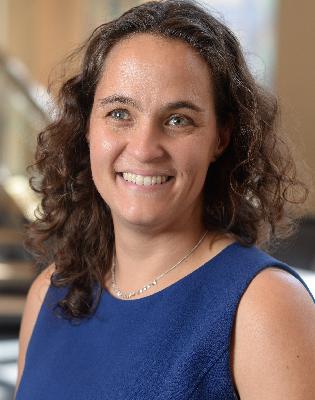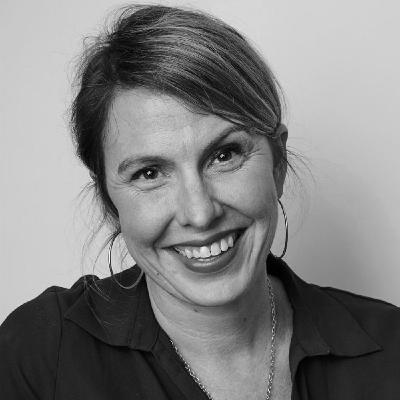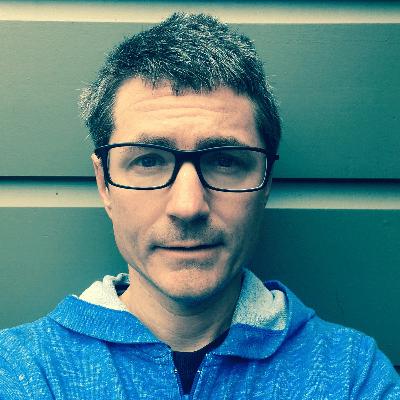60: Making the World– Design Education and Social Change (ft. Lesley-Ann Noel, PhD)
Description
Show Notes
Help Jesse and Peter better serve you by sharing a bit more about who you are, what you’re into, and what you’d like to hear from us in this listener survey which should just a few minutes to complete. Thank you!
Summary: Dr. Lesley-Ann Noel, Dean of Design at OCAD, joins Jesse and Peter to discuss her global journey from Trinidad to Toronto, leading design education through relationships over craft, preparing students for social change, and her vision for decolonizing design while navigating the tension between academic values and industry demands.
Help UX and Get a Chance to receive $100! Peter is conducting a global UX and Design Organizational Health survey to better understand the state of our practice and industry. 5 respondents will receive either a $100 gift card or 1 hr of consulting/coaching with Peter. It takes about 10 minutes to complete. Thank you!
Transcript
Jesse: I’m Jesse James Garrett,
Peter: and I’m Peter Merholz.
Jesse: And we’re finding our way,
Peter: navigating the opportunities
Jesse: and challenges
Peter: of design and design leadership.
Jesse: On today’s show, we’re joined by Dr. Lesley-Ann Noel, the new-ish Dean of Design at the Ontario College of Art and Design, and author of the book Design Social Change. We’ll talk about social change and design’s role in it. We’ll also talk about design education and its relationship to design in practice, and how she uses her design skills to find success in the world of academia.
Peter: Dr. Noel, Lesley, thank you so much for joining us today.
Lesley-Ann: Thank you so much for the invitation, Peter.
Peter: We have some mutual friends in common who have said how impressed they are with the work that you are doing as the still relatively new Dean of Design at OCAD, the Ontario College of Art and Design. And maybe to start off, it would be good just to get a bit of your story.
How did you land as the Dean of Design at OCAD, and what’s this first year been like?
Lesley-Ann: Yeah, so I, I don’t think we have enough time, but I’ll, I’ll take you around some of the twists and turns. Actually I’m gonna go way back to me at 19 , me as a late teenager. I was interested in graphic design first, and I’m from Trinidad and Tobago in the Caribbean, and I was interested in graphic design and applied to all of these fantastic schools like Parsons and Pratt and RISD and Howard and got into a few of them and then just didn’t have the money to go.
And my parents said to me, you can study anywhere in the world as long as we don’t have to pay for it. And actually, that has sent me around the world. So I ended up doing undergrad at Universidade Federal do Paraná. Which is a federal university of Parana in Brazil, where I landed just because I was looking for good free education. And I did industrial design there.
From there I went back to Trinidad. I used to teach at the University of the Western Indies. I eventually took leave from the University of the West Indies and went to North Carolina State University as a PhD student at that point. Then from North Carolina State University as a PhD student, I went to the D.School at Stanford for a year on a fellowship, a teaching fellowship. From there, I went to Tulane University. Spent two years as associate director of design thinking at the Phyllis Taylor Center, I’m, I’m messing up the name, but I love Tulane. I love the Taylor Center. And then from there I went back to NC State as a faculty member. Spent some time there, went up for tenure, got tenure, and then got a very distracting phone call from OCAD that said, Hmm, we have a job here that you might be interested in.
And at that point, I actually did not think I was gonna leave Raleigh again for the rest of my life. And, came up to Toronto for the interview with my partner and my son. And we all looked around and said, wow, this city is actually kind of cool. And this city is everywhere at the same time. So Toronto is Trinidad, it’s Vietnam, it’s Brazil. It’s just everywhere at the same time. And, as I progressed in the interview process, ’cause I really just came up for the trip…
Jesse: mm-hmm.
Lesley-Ann: and as I went further and further in the interview process, I thought, oh wow, this is actually pretty exciting. OCAD is a fantastic university with very clear mission, and so I was very happy that they selected me for the position and I just walked then into this role of Dean of Design and I’ve been learning on the job since August last year.
it’s up and down, up and down, a very interesting rollercoaster.
Peter: It sounds like almost from the beginning you’ve had an academic orientation when it comes to design, teaching others, getting your PhD, and when I think of design, design is, such a craft, it’s such a practice. Obviously most of the people we engage with, they do it for, you know, hands-on design for their job.
I’m wondering what it was, After you got your maybe that first degree in industrial design, what was it that drew you towards more of a teaching and academic path as opposed to a practice, craft path?
The Path to Academia
Lesley-Ann: Maybe it’s that I describe the academic path more clearly because it’s easier for people to understand, right? I, think a lot of us as designers, we learn how to hustle and we, you know, there are designers who get jobs and then there are designers who maybe I’ll use kind of business language, the designers who make jobs, right?
And so, you know, a lot of us really are moving from hustle to hustle to hustle. I started off in furniture design and then really spent there’s a gap in the story that I just told you. I spent a long time doing consulting work as a designer and working for really anybody that I could convince that they needed design, you know, whether it was government ministries, export promotion councils, really anybody, theater production companies, anybody who, who was interested in design or who I could make interested in design, I would do projects for them.
But I ended up being drawn to academia, I’ll have to say, because of the stability, you know, and there was a point where I was like, okay, I need a little bit of stability. I have a child’s education that I’ll have to pay for eventually.
And then there are some countries in the world where there will be fewer stable opportunities for designers. It’s not that design work doesn’t exist, it’s that maybe the stability of a full-time job in design might not exist. So that’s really how I ended up in academia because academia provided some stability when I needed it.
And then what always interested me in academia is that, okay, if you are from a place without design jobs, kinda like what’s the role of design in that kind of space. You know, like having studied in Brazil, going back to Trinidad, those have always been questions that I’ve focused on, you know, what else can we be doing with design? Is it just about graphic design? Is it just about jobs or are there other things that we could make with our design abilities?
Jesse: What do you see yourself creating now at OCAD?
Creating Space: The Dean as Co-Designer
Lesley-Ann: So at OCAD I see myself, this will sound very, very wishy-washy. I see myself creating space.
Jesse: Mm.
Lesley-Ann: So in my last role at NC State, I worked with a lot of PhD students, and at OCAD, like we don’t yet have a PhD program, but I do see myself doing that kind of PhD advisor role almost, with a lot of faculty members who are doing research.
So I, see myself creating that kind of environment at OCAD where people are supporting people to deepen their own practice, creating some additional opportunities for students trying to emphasize that there are many different ways of doing design and, there is space for your design practice in this world of design.
I think of the Dean role as a support role where I am supporting a lot of people to be great.
Jesse: I imagine that entails a lot of context switching as you are shifting from one leader’s needs to the next leader’s needs. As you’re engaging with the leaders of these various design disciplines or programs that are all under your umbrella, how do you manage all of that?
Lesley-Ann: So we have six programs at OCAD. Lemme see if I could count them all. We have graphic design, advertising, illustration, industrial design, environmental design, and material art and design. And these are our undergrad programs. And then we have graduate programs in design, which I have less of a role in.
interestingly, in the undergrad programs, I use this as my entry conversation with people, I’ve had an active interest in all of these six programs. I mean, it’s a coincidence that I ended up here, but, you know, I always, I loved illustration as a teenager. My first job was in advertising. I worked in graphic design f























